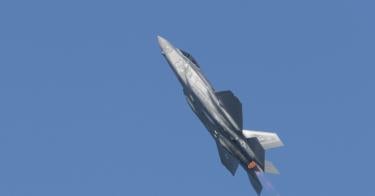After a three-year competition between the UK/German Eurofighter, the French Rafale, Boeing’s F/A-18E/F, and Lockheed Martin’s F-35A, the Swiss government has selected the Joint Strike Fighter to replace their aging F/A-18s.
The Swiss determined the F-35A was the most capable of the three. Moreover, they calculated that it would be less expensive to acquire, operate and sustain than even the F/A-18E/F—a jet whose purchase price is $13.6 million less than Boeing’s baseline F-15EX.
The decision no doubt surprised those who’ve read that the F-35 is just a money pit filled with technical problems. And the cost analysis may even raise eyebrows in the Pentagon, which based its recent decision to procure F-15EX instead of F-35A on costs.
If the Swiss believe the F-35 is cheaper than the F/A-18E/F, and the latter is cheaper than what DoD plans to pay for the F-15EX, then math would dictate that the F-35, over its lifespan, will be cheaper to operate than the F-15EX, eliminating the main reason to buy the Eagle II entirely.
>>> Russia and China Would Love to See the F-35 Fail. But It Won't.
Could Switzerland, a nation known for financial precision, have made a mistake? Maybe their process was flawed, so let’s start there.
The Swiss Government began Air2030, the competition for its next fighter, in the spring of 2018. The evaluation of the four candidates was methodical, and included a thorough examination of weapons system effectiveness, as well as the acquisition and operating costs for each fighter proposal.
Effectiveness was evaluated through a weighted combination of operational capability (55 percent), ease of maintenance (25 percent), cooperation (10 percent) and direct compensations in the form of investments in the Swiss economy (10 percent).
All four jets went through ground and in-flight tests from May to July 2019, followed by a final request for “best offer” proposals.
At the end of the process, the Swiss Federal Council determined that all four candidates met the Air2030 operational requirements but that the F-35A was an absolute standout, receiving a score of 336 points. The next nearest candidate scored just 241.
The evaluators found the networked systems of the F-35A enabled pilots to have more situational awareness and that the stealth fighter was more survivable in all mission areas. The F-35A also achieved the highest grades for product support, efficiency of maintenance and potential for collaboration with other countries.
But while the jet’s effectiveness or technological edge was no surprise, the Swiss assessment of costs of the F-35A was eye-opening.
They determined that 36 F-35As were $2.16 billion less expensive to acquire, operate and sustain over the life of the weapons system than a similar number of the best of the other three fighters.
That includes Boeing’s F/A-18E/F Super Hornet, which costs $74.1 million per jet—roughly $4.5 million less than a fully combat capable F-35A—but that is before the Super Hornet is fitted with the additional pods and equipment required to make it combat capable.
The Swiss findings may or may not influence the ongoing fighter competitions in Canada and Finland, where each is considering both the F-35A and the F/A-18E/F, but the impact of the Swiss government’s cost assessment absolutely should, at the very least, call into question similar calculations by the U.S. Defense Department.
U.S. Air Force figures for the F-15EX establish the cost of that jet at $87.7 million a copy—$13.6M more than the F/A-18E/F.
But those figures are for baseline jets and do not include the additional equipment required to make them combat capable. When you add in the electronic countermeasures (ECM) suite and the targeting pods that enable the F-15EX to fly in combat, its price jumps to $101.1million, $22.5 million or 29 percent more than a combat ready F-35A.
Bafflingly, those acquisition costs were not considered in the Pentagon’s assessment of the two jets.
>>> Why the F-35 Rules: Study History, Study Costs, Study Threats
Nor were the additional costs required to operate and sustain those sub-systems factored into CAPE’s assessment of the F-15EX’s Cost Per Flying Hour, the main method for determining the long-range sustainment “savings” of the F-15EX over the F-35A. Funny enough, CAPE included the costs to operate and sustain similar, but more advanced sub-systems of the F-35 in that jet’s Cost Per Flying Hour.
Perhaps the Defense Department figures are more complex or inclusive than they now appear. Perhaps the notoriously precise Swiss made a grave mistake in their calculations—errantly selecting a more expensive system over the other three entrants. Or maybe it was the fact that their review was completely independent—unaffected by U.S. politics and internal Defense Department biases—that allowed the F-35A to actually out-compete the others on price.
Either way, the findings from Air2030 should send a chill through Congress, DoD, and the US Air Force, and require that all sides take a closer, fully transparent appraisal of the real costs associated both the F-35A and the F-15EX. Because if the Swiss are right, then the Air Force is about to invest in a less capable, more expensive fighter when that money is desperately needed elsewhere.
This piece originally appeared in Breaking Defense



